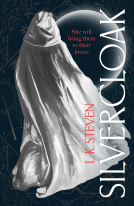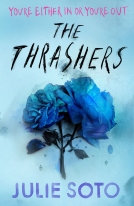
Leonardo's Science Workshop
Invent, Create, and Make STEAM Projects Like a Genius
by Heidi Olinger
This title was previously available on NetGalley and is now archived.
Send NetGalley books directly to your Kindle or Kindle app
1
To read on a Kindle or Kindle app, please add kindle@netgalley.com as an approved email address to receive files in your Amazon account. Click here for step-by-step instructions.
2
Also find your Kindle email address within your Amazon account, and enter it here.
Pub Date 1 Jan 2019 | Archive Date 11 Feb 2019
Quarto Publishing Group – Quarry | Rockport Publishers
Talking about this book? Use #LeonardosScienceWorkshop #NetGalley. More hashtag tips!
Description
More than 500 years ago, Leonardo knew that the fields of science, technology, engineering, art, and mathematics (STEAM) are all connected. The insatiably curious Leonardo examined not just the outer appearance of his art subjects, but the science that explained them. He began his studies as a painter, but his curiosity, diligence, and genius made him also a master sculptor, architect, designer, scientist, engineer, and inventor. The Leonardo’s Workshop series shares this spirit of multidisciplinary inquiry with children through accessible, engaging explanations and hands-on learning.
This fascinating book harnesses children’s innate curiosity to explore some of Leonardo’s favorite subjects, including flight, motion, technology design, perspective, and astronomy. After each topic is explained with concepts from physics, chemistry, math, and engineering, kids can experience the principles first-hand with step-by-step STEAM projects. They will explore:
- The physics of flight by observing birds and experimenting with paper airplane designs
- The science of motion by building a windup dragonfly
- Gravitational acceleration with water balloons
- The movement of electrons by making cereal “dance”
- Technology design by making paper and fabric using recycled material
- Scientific perspective by drawing a 3D illusion
Introduce vital STEAM skills through visually rich, hands-on learning with Leonardo’s Science Workshop.
Marketing Plan
Specific to Science Workshop: We will focus our pitches on history buffs, people who are into makerspaces and tinkerers.
This is the launch of a new series, so we will focus on the key selling points: each book connects all of the STEAM subject areas at once, while highlighting a specific area in a fun, visual way in a Wide-ranging pitch to education, technology, art and history media.
We will create teachers notes/activity sheets about art history, in general, and DaVinci's contributions to all areas of STEAM.
DaVinci is a major figure in Italian history, so we may also be able to get extra coverage in cities that have large Italian populations: New York, Philadelphia, Chicago, Boston, Pittsburgh, Los Angeles/Long Beach, Detroit, Cleveland, Rochester (NY) and Washington, D.C.
Leonardo's birthday is on April 15 (567 years before 2019), so we may be able to do a secondary push then.
Available Editions
| EDITION | Other Format |
| ISBN | 9781631595240 |
| PRICE | US$24.99 (USD) |
Featured Reviews
 Rose B, Reviewer
Rose B, Reviewer
A very useful book when helping to explain science and physics concepts to youth. Vibrantly colored graphics blended with schematics will keep their attention while they read the easily understandable text. I found plenty of examples in each of the sections that could be replicated to help the learning process. I would buy this for my own grandchildren.
Full Disclosure: I was allowed to read a copy of this book for free as a member of NetGalley in exchange for my unbiased review. The opinions I have expressed are my own and I was not influenced to give a positive review.
Who doesn't love da Vinci? In this book, the reader is given science lessons along with fun experiments illustrating the lessons' ideas, all inspired by the work of Leonardo da Vinci. This would be a great introduction to various scientific ideas and terms for middle grades.
Thank you to Quarto Publishing Group – Quarry and NetGalley for the opportunity to read this book in exchange for my honest review.
 denise w, Reviewer
denise w, Reviewer
#LeonardosScienceWorkshop #NetGalley
Great science book. Wonderful explanations with easy to follow examples and activities to do with your child. Science was always something I worried about teaching, but with tools like this one it becomes very easy!
I received an advance reader copy in exchange for a fair review.
 Sharley B, Reviewer
Sharley B, Reviewer
Another fascinating book from this series. Really great at bringing science in to your home and lives. The experiments are great to entertain the kids. For me the history and science behind it all was more for me as it went over my children's heads, probably a little too young still but they had a fabulous time with the experiments and I do think it will all start to sink in.... right??
 Cristie U, Book Trade Professional
Cristie U, Book Trade Professional
The author provided STEAM projects that were not only educational, but fun to complete for my students. I found this to be an interesting and useful book.
 Kate T, Reviewer
Kate T, Reviewer
Love this book from the Leonard's Workshop series. This is just perfect for introducing some of Leonardo's concepts to our kids in library programs. Most helpful is that a concept is presented in clear easy to understand language followed by projects related to the concepts. Just wonderful!
I have been talking about STE(A)M education and books since the very earliest days of my blog. It's vitally important to expose kids to the concepts as soon as possible. They're the ones who are going to be making our future. They're the innovators, creators, inventors, discoverers of tomorrow's world. The more our kids are engaging with the world around them, the better. Critical thinking skills are more vitally important now than ever before. We're bombarded with messaging and media spin from the moment we're born and learning to differentiate the truth is a vital survival skill. That's where STE(A)M comes in. Finding fun ways to keep their interest alive is key.
Leonardo's Science Workshop is a new project book by Heidi Olinger. Released 1st Jan 2019 by Quarto on their Rockport imprint, it's 144 pages and available in flexibound and ebook formats. It's visually very appealing and includes good clear photography and layout. The book begins with a short introduction/bio of Leonardo's life and prodigious creative genius.
The chapters are built up around experimentation and observation. There's a pretty good description of the scientific method aimed at middle-readers in the introduction. The first chapter is about fluid dynamics and includes 6 age-appropriate projects. Each of the tutorials is well photographed and includes clear instructions.
The air chapter is followed by a chapter on kinetics/physics of motion. This chapter, too, explains basic concepts and includes projects (experiments) to illustrate them. The third chapter is all about energy and includes some nice projects on the electromagnetic spectrum, static electricity, building a wind turbine, etc.
All in all, these are age appropriate, interesting, well written, and safe. The layout is appealing and accessible. It would be a good addition to a classroom module for physics for middle grades. It would also make a good gift for a physics interested young person. It might be a little too straightforward and rigid to interest kids who are already wrongly convinced physics isn't cool or fun.
We need more critical thinkers and anything that fires up the next generation's STEAMers is great!
Four stars.
 Concert K, Reviewer
Concert K, Reviewer
Leonardo's Science Workshop is a book of projects to invent, create, and make steam projects like a genius. This book has 6 chapters: Take Wing, Moving Along: The Science of Motion, One Energy source flows to the next, designing technologies, rocks and stars and write a letter to Leonardo. Each chapter has step by step instructions as well as some text history about the hands on activities as well. I liked that in addition to showing you some of these activities it also talks about the science behind it, so you can learn a little bit and then do a hands on example. I was always much more of a hands on learner and needed to see it to believe it so these activities would have been great for me as a kid. As an engineer, this book had a lot of really fun options in it - especially relating to my job now - like making paper airplanes! I honestly wish I had the time and supplies to go through and make everything that is listed in this book, each page just had a cooler and cooler activity on it.
I received a free e-copy of this book in order to write this review, I was not otherwise compensated. This book was released January 1, 2019 on Quarry Books.
 Poongothai S, Reviewer
Poongothai S, Reviewer
Based on Leonardo's works there are lots of science ideas represented in this book with some very interesting projects and experiments with step step by instructions.
Thanks to netgalley and the publisher for the eARC
 Cheryl S, Educator
Cheryl S, Educator
I really liked this huge book! It has tons of illustrations to make each lesson easy to follow. My class is doing a segment on bugs that goes right along with the flying dragonfly project. The kids will love it!
As a parent and teacher, I found Leonardo’s Science Workshop to be a fascinating book on science, design, experiments, and STEAM projects. It is a good book to have in a classroom or school library to help explain math and science to students. The book is written towards middle school age students but could be used for elementary or high school students too. The 144 book is divided into 1) Take Wing with six activities, 2) Moving Along: The Science of Motion with five activities, 3) Energy Source of Light, Wind, and Electromagnetic Fields with three activities, 4) Designing Technologyies with five activities, 5) Rocks and Stars with four activities and then finally a Letter to Leonardo. The book is filled with easy experiments that can be done at home or in the classroom with every day items.


















